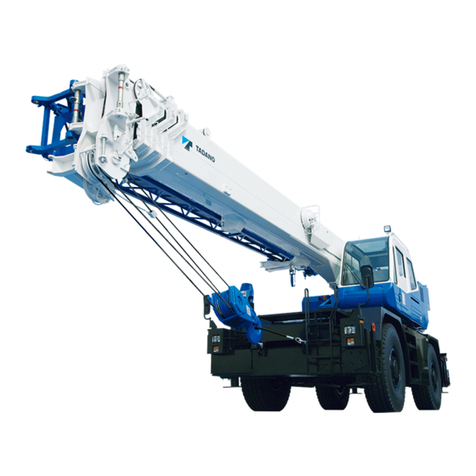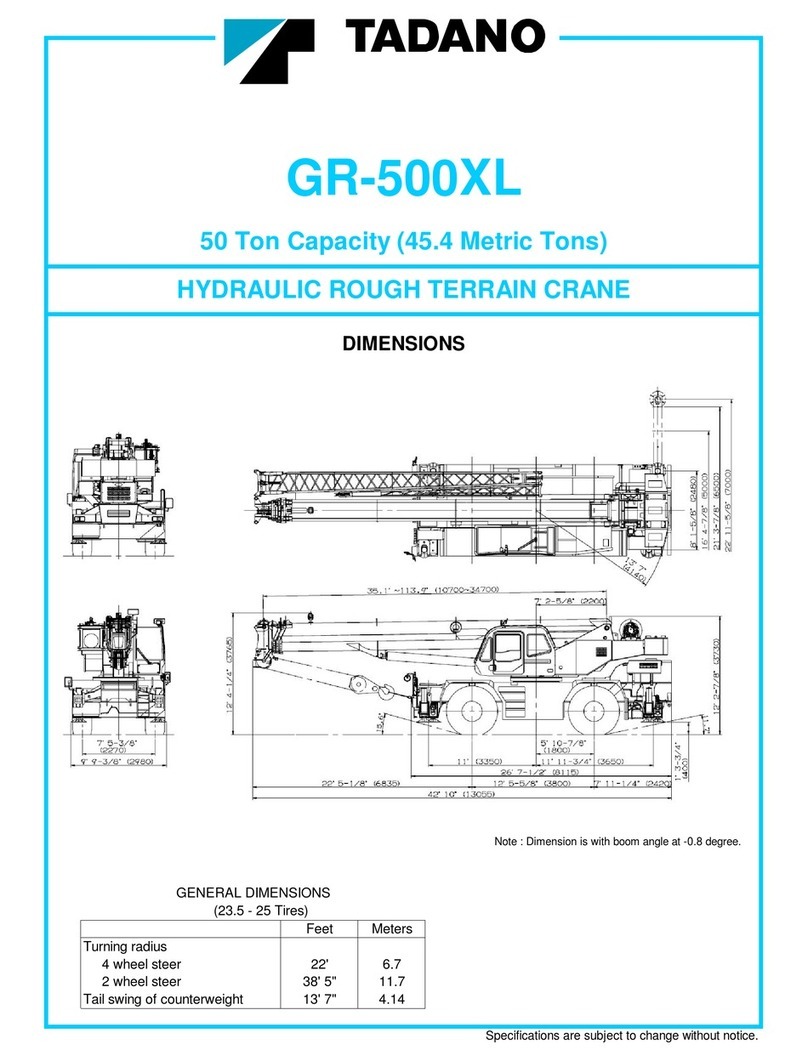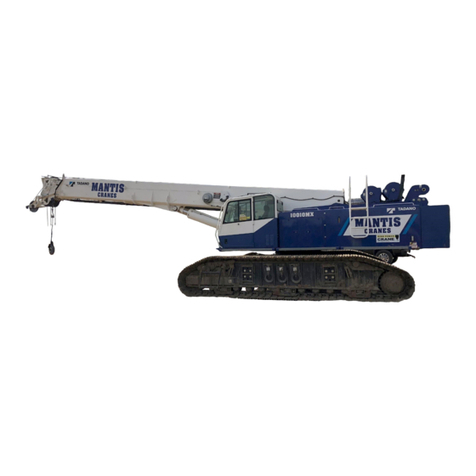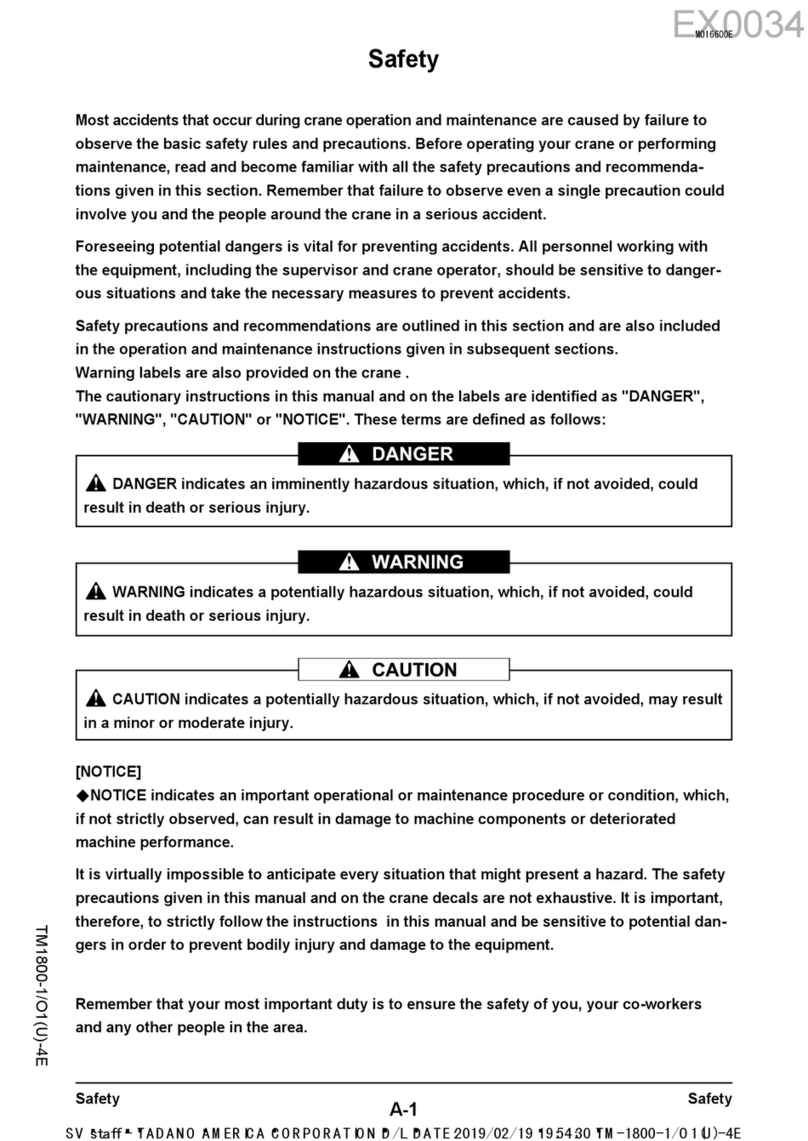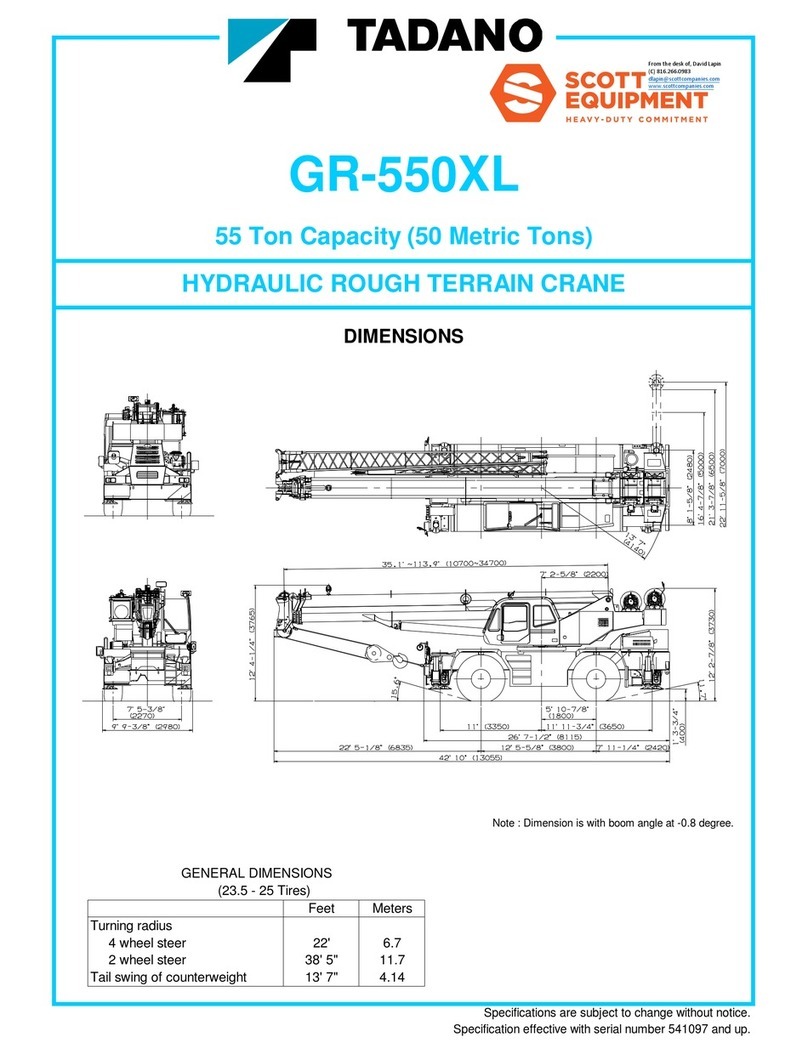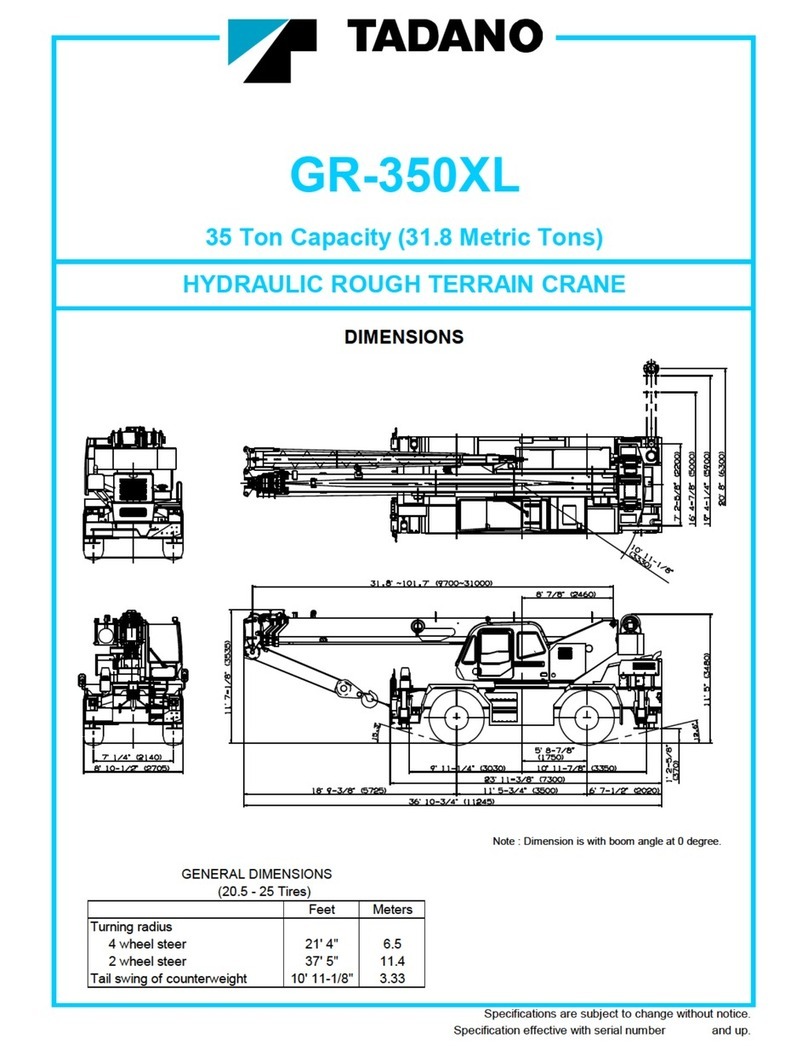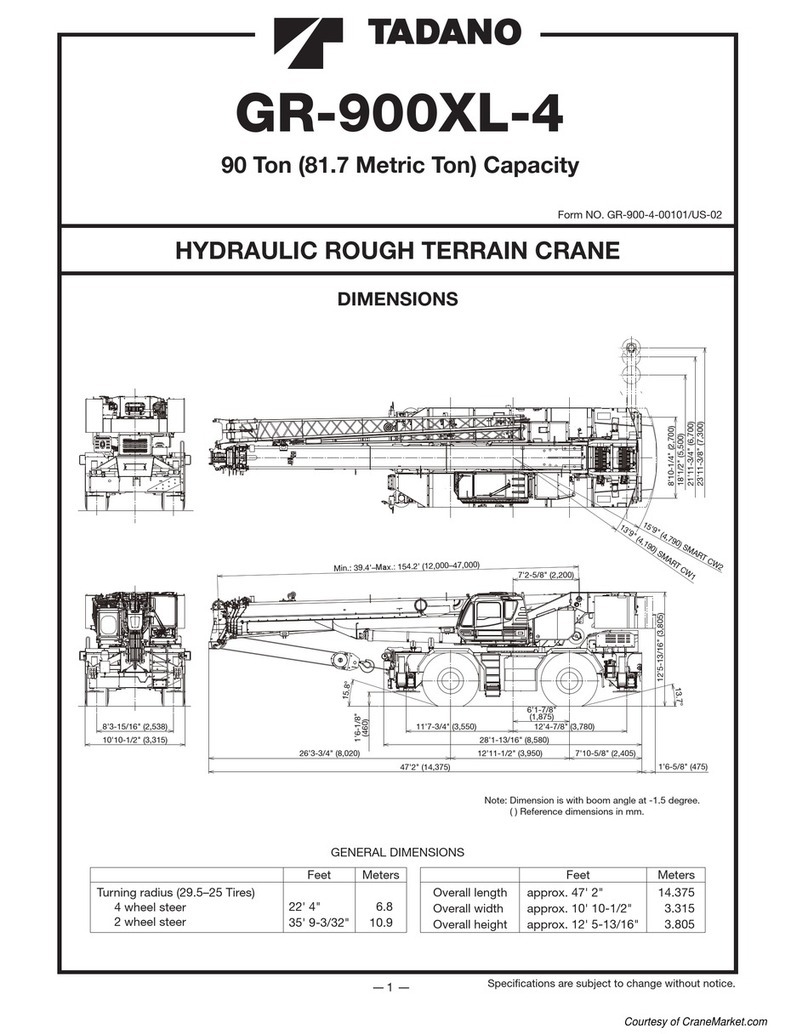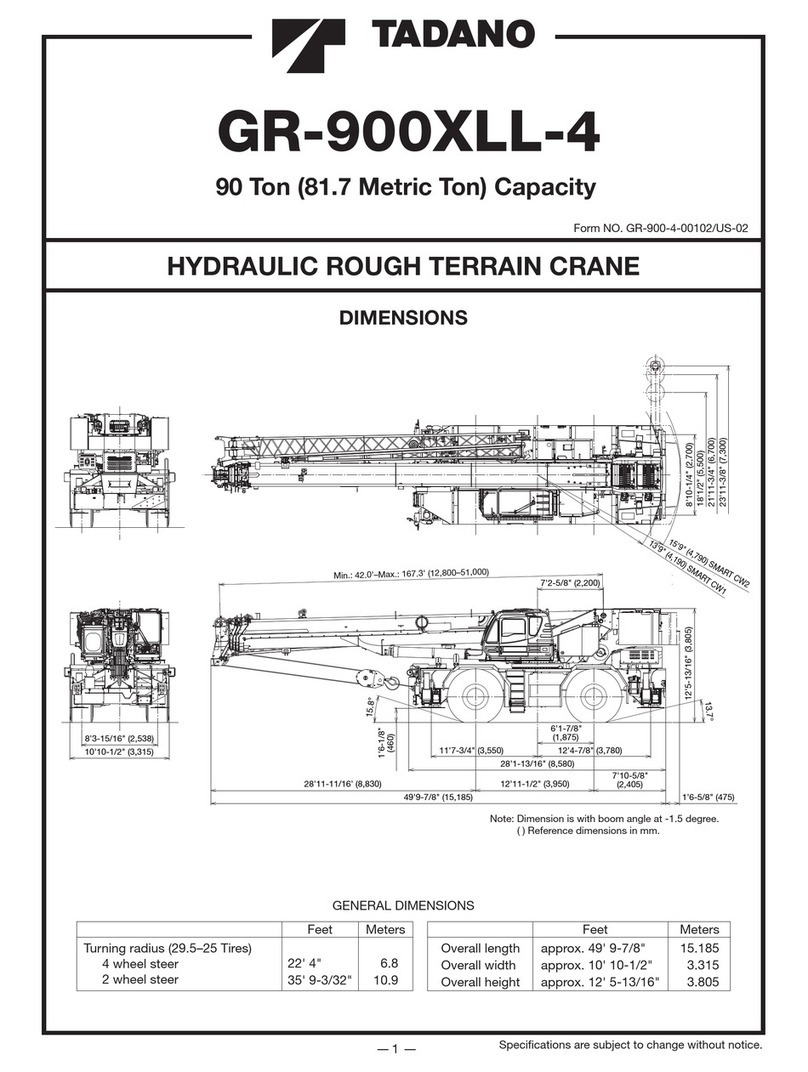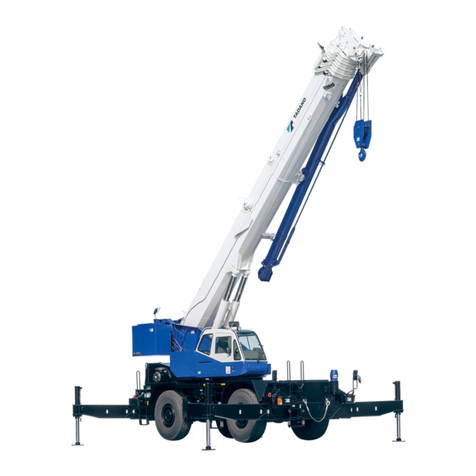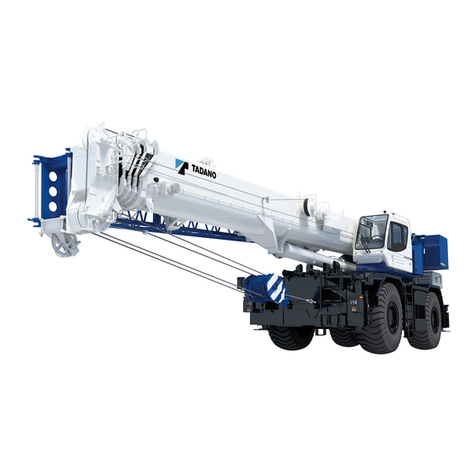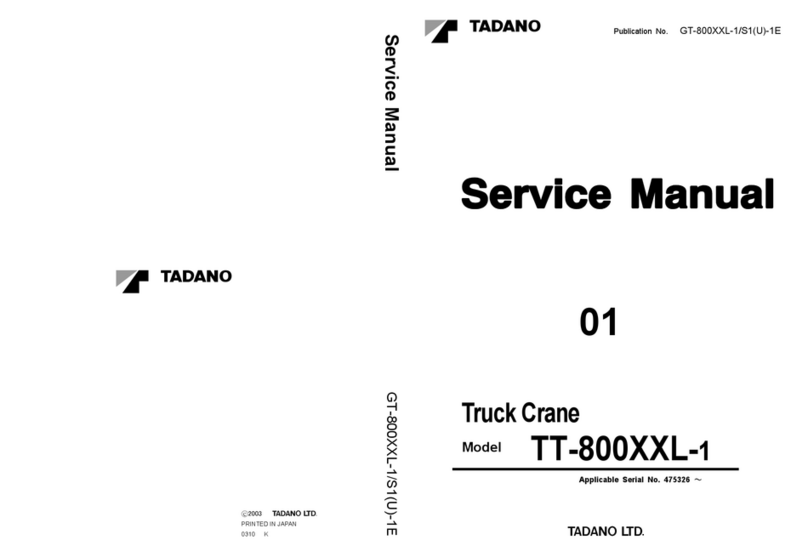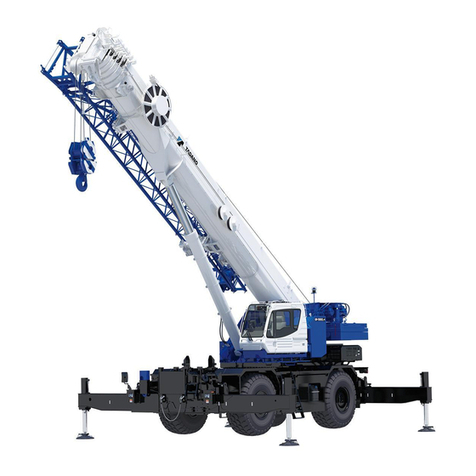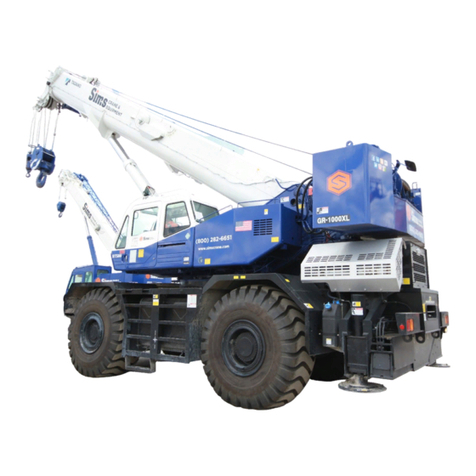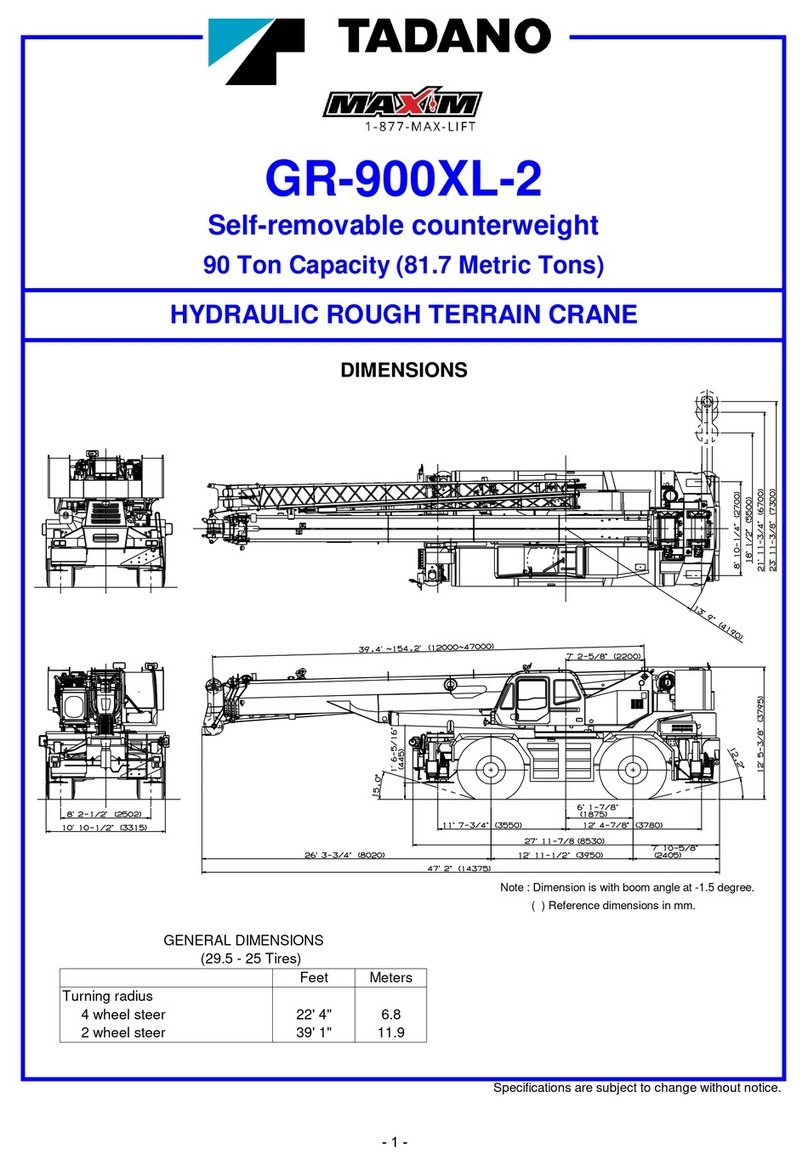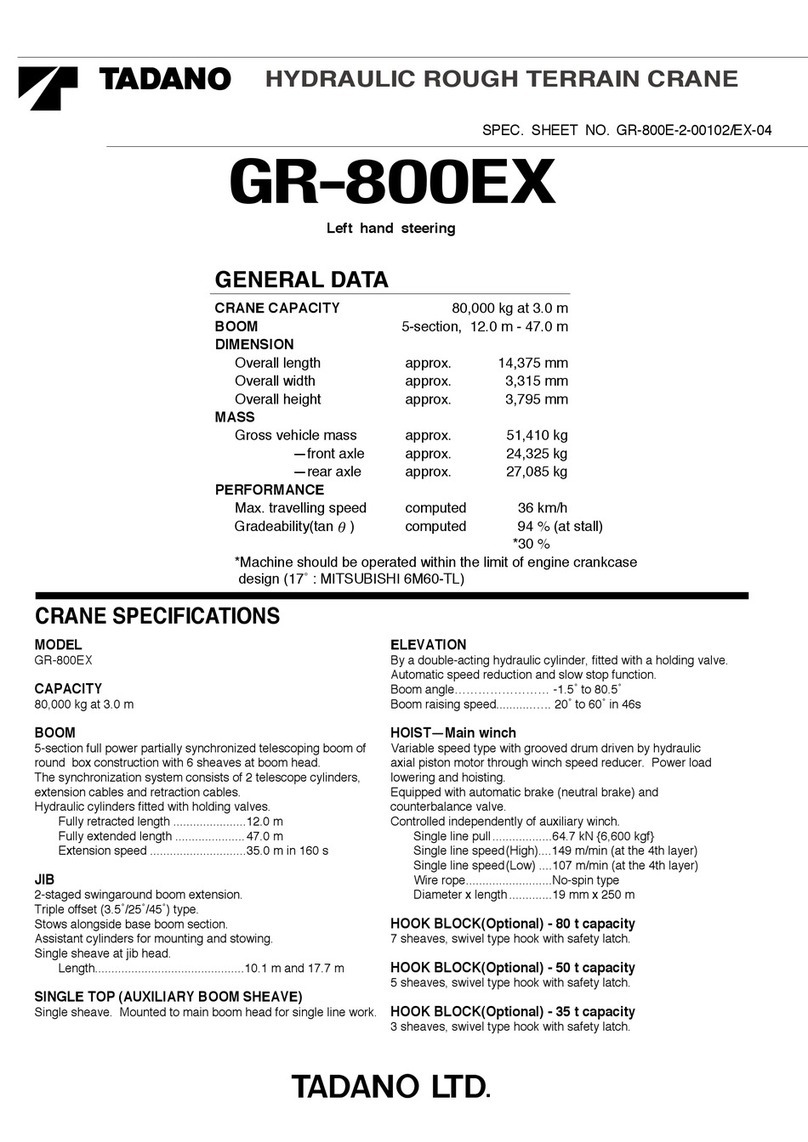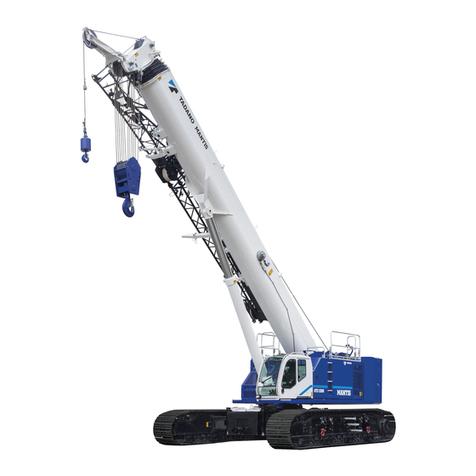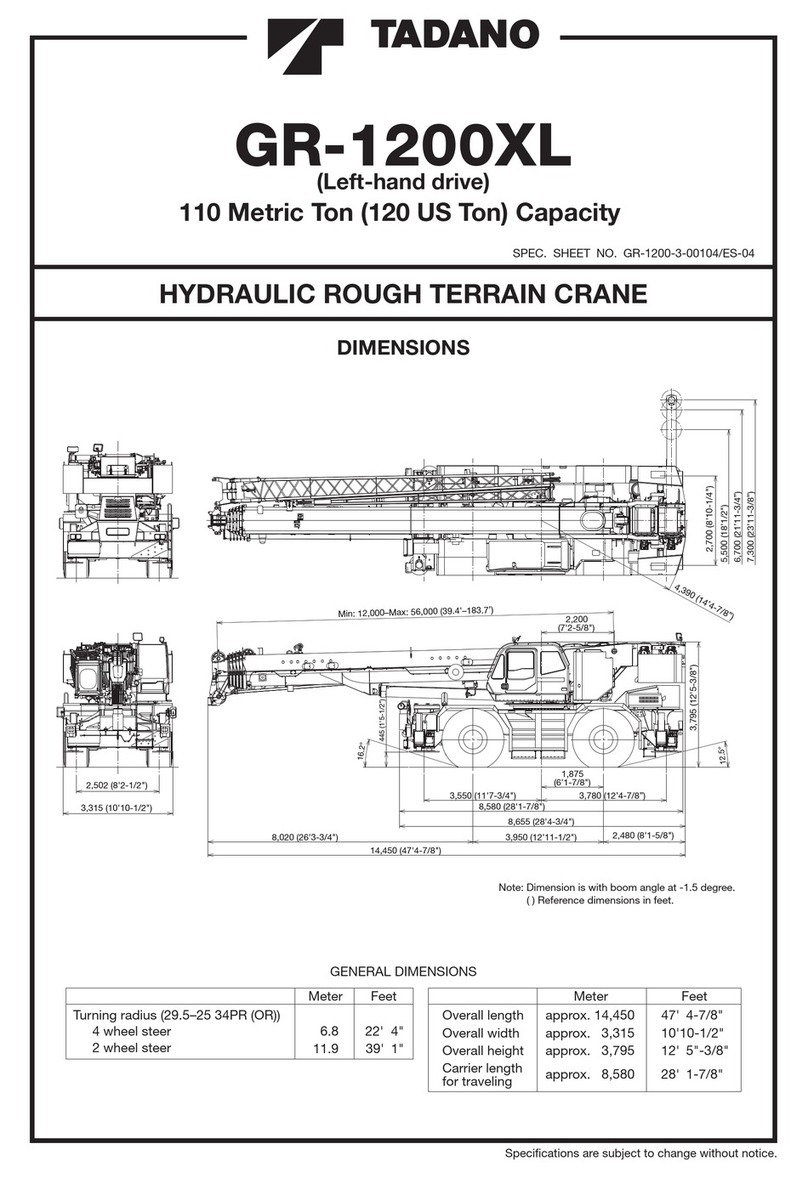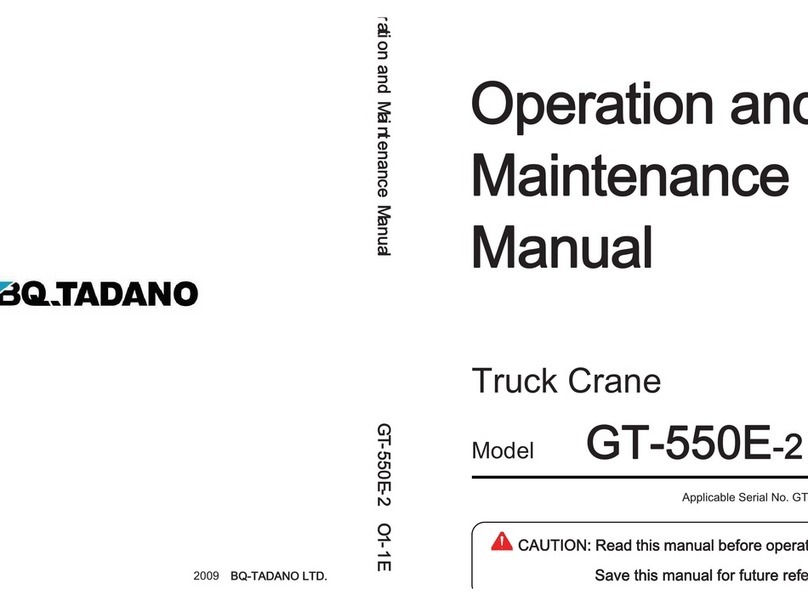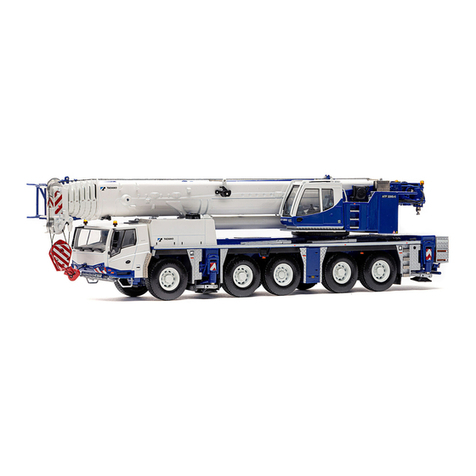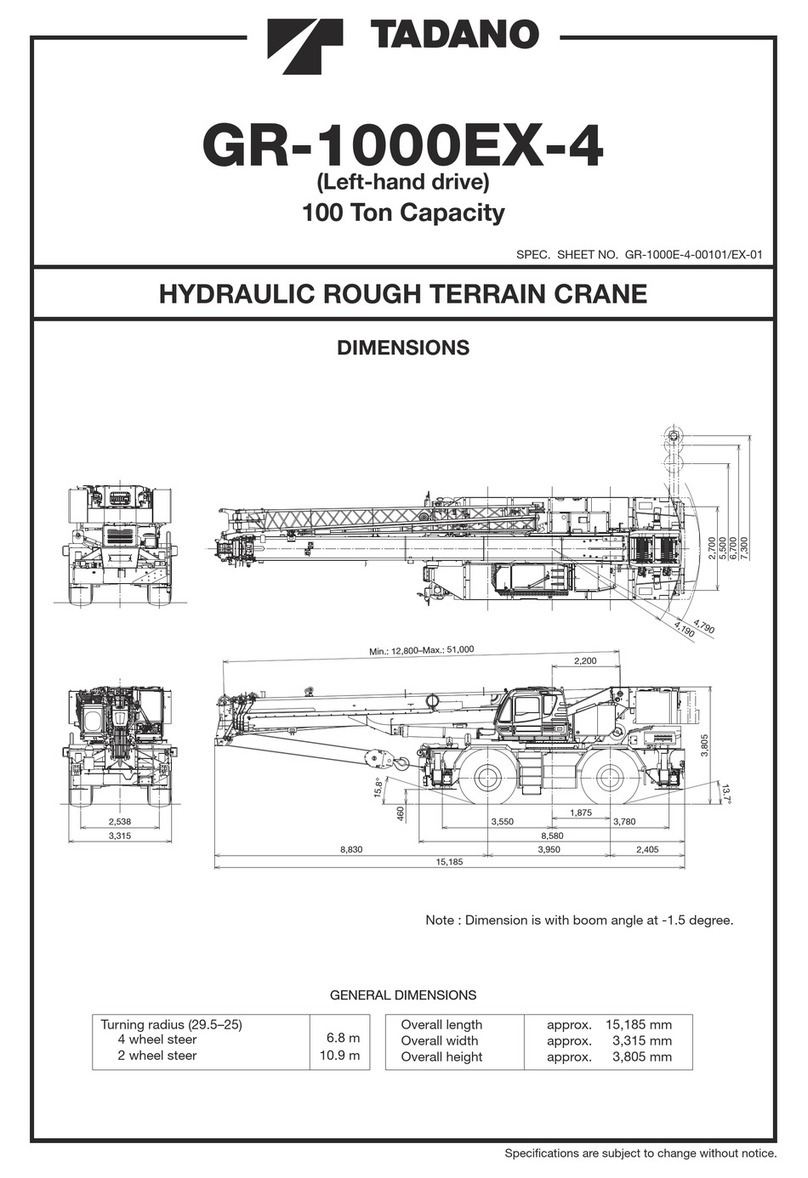
3.9.2 Superstructure lock 198
3.9.3 Swing mechanism lock*) 200
3.9.4 Overriding the slew/derrick slow-stop function 202
3.9.5 Assigning the crane control levers 204
3.10 Rigging and dismantling 225
3.10.1 Counterweights 225
3.10.2 Jib*) 253
3.10.3 Lifting work 396
3.10.4 Hook tackle/bottom block 403
3.10.5 Bottom block holder*) 403
3.10.6 Single top 405
3.10.7 Removing the second hoisting gear, mounting the balancing counterweight 407
3.10.8 Two-hook operation 409
3.11 Crane operation with load 412
3.11.1 Influence of the temperature difference in case of heating of the boom due to solar radia‐
tion
412
3.11.2 Crane operation on outriggers 413
3.11.3 Crane operations on wheels 415
3.12 Ladders, access steps, railing 416
3.12.1 Double ladder 417
3.13 Add-on parts, special and ancillary equipment 421
3.13.1 Hourmeter for hoisting gear 1 421
3.13.2 Hourmeter for hoisting gear 2 422
3.13.3 Observation mirror of hoisting gear 1 422
3.13.4 Observation mirror of hoisting gear 2 423
3.13.5 Charging socket and plugbox for starting via an external power source 424
3.13.6 Load view camera*) 425
3.13.7 Amot Control (engine stop) 426
3.14 Winter operation 427
3.14.1 Engine 428
3.14.2 Hydraulic system 430
3.14.3 Windshield washing system 431
3.15 Operation in case of an emergency 431
3.15.1 Crane control 432
3.15.2 Failure of components or central unit of the safe load indicator 434
3.15.3 Resetting telescope manually 436
3.15.4 Slewing the superstructure 445
3.15.5 Counterweight 447
3.15.6 Drive unit 449
3.15.7 Emergency stop switch for the superstructure 454
3.15.8 Starting the superstructure engine using external current 454
3.15.9 Emergency exit 458
3.15.10 Superstructure emergency stop pushbutton 459
3.15.11 Emergency control/emergency release*) 459
Table of Contents
ATF 130G-5 2146097
2014-09
5
